Product Images Baclofen
View Photos of Packaging, Labels & Appearance
Product Label Images
The following 6 images provide visual information about the product associated with Baclofen NDC 70511-121 by Mala Pharmaceuticals, Inc., such as packaging, labeling, and the appearance of the drug itself. This resource could be helpful for medical professionals, pharmacists, and patients seeking to verify medication information and ensure they have the correct product.
carton label 5 pack - carton label 5 pack
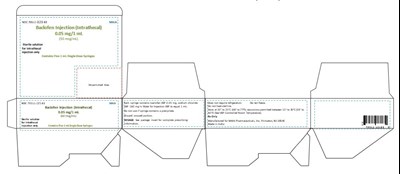
This text alone does not provide enough information for a useful description. It simply states the name of a medication and how it is administered. It is possible that additional information was intended to be included but was not successfully captured by the process.*
carton-label - carton label
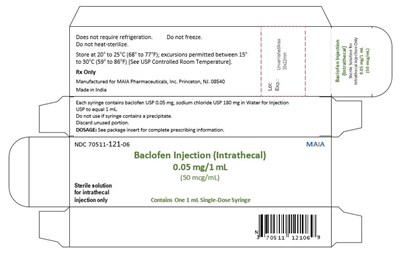
This is a description of a medication called Baclofen Injection (Intrathecal), manufactured in India. Each syringe contains 0.05mg of Baclofen USP, 130mg of sodium choride USP, and water for injection to equal 1mL. The medication does not require refrigeration or freezing and should be stored between 15-30°C. The dosage information is provided in the package insert for complete prescribing information. The product is sterile and intended for intrathecal injection use only.*
syringe-label - syringe label
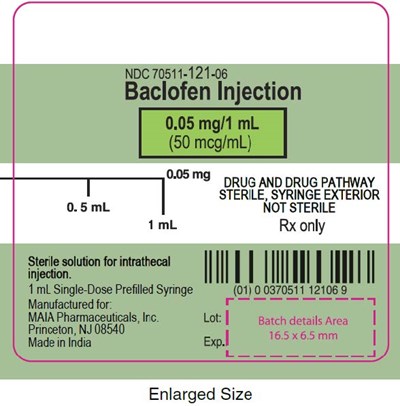
This is a sterile syringe exterior that belongs to the drug pathway used for administering drugs for medical purposes. It is hot sterile and intended for Rx only, meaning it should only be used as prescribed by a physician or licensed healthcare professional.*
Table 1 - table 1
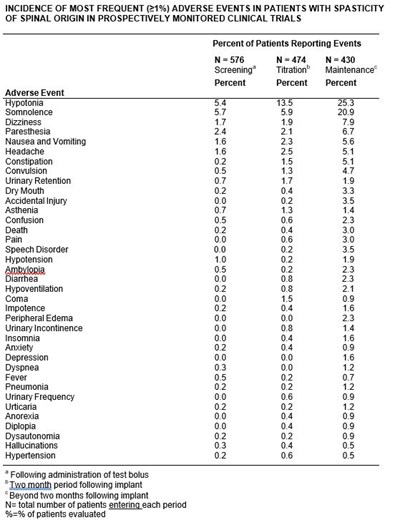
The given text displays the incidence of adverse events in patients with spinal spasticity in prospectively monitored clinical trials. The table lists percentages of patients reporting the most frequent adverse events during screening, titration, and maintenance phases. The adverse events include hypotonia, somnolence, dizziness, paresthesia, nausea, and vomiting, among others. The table also mentions the total number of patients entering each period and the number of patients evaluated.*
Table 2 - table 2
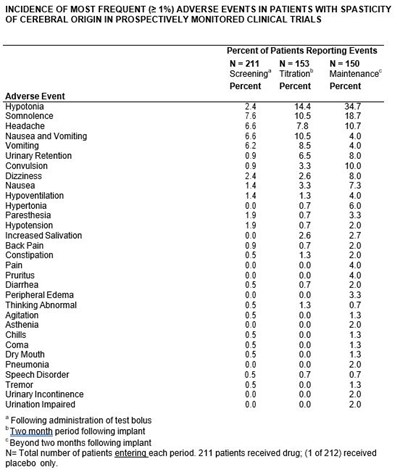
This text provides the incidence of the most common adverse events in patients with cerebral spasticity from clinical trials. The adverse events discussed include hypotonia, somnolence, headache, nausea and vomiting, urinary retention, and paresthesia. The text presents the percentage of patients reporting events during screening, titration, and maintenance periods. The number of patients monitored during each period is also presented.*
* The product label images have been analyzed using a combination of traditional computing and machine learning techniques. It should be noted that the descriptions provided may not be entirely accurate as they are experimental in nature. Use the information in this page at your own discretion and risk.
